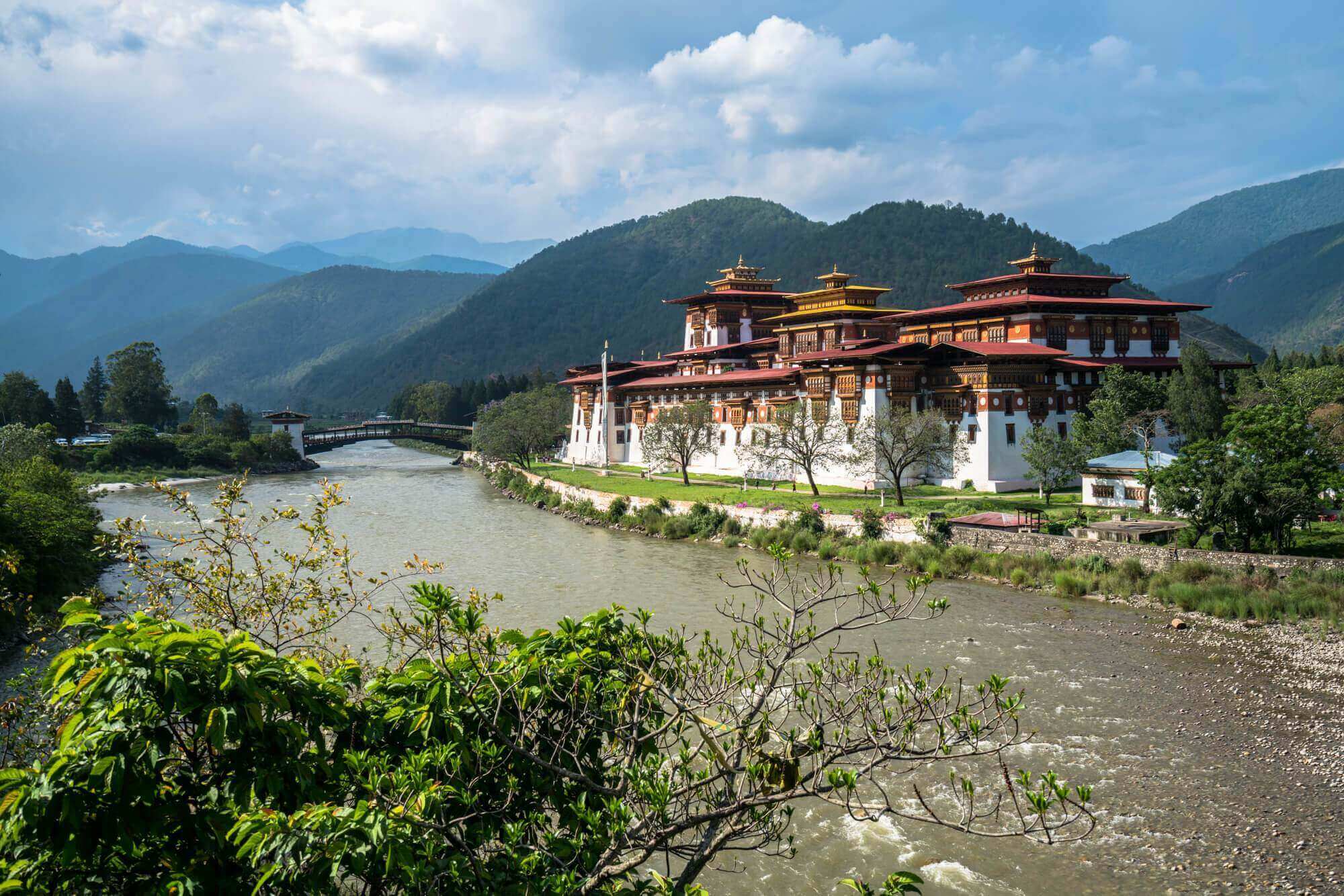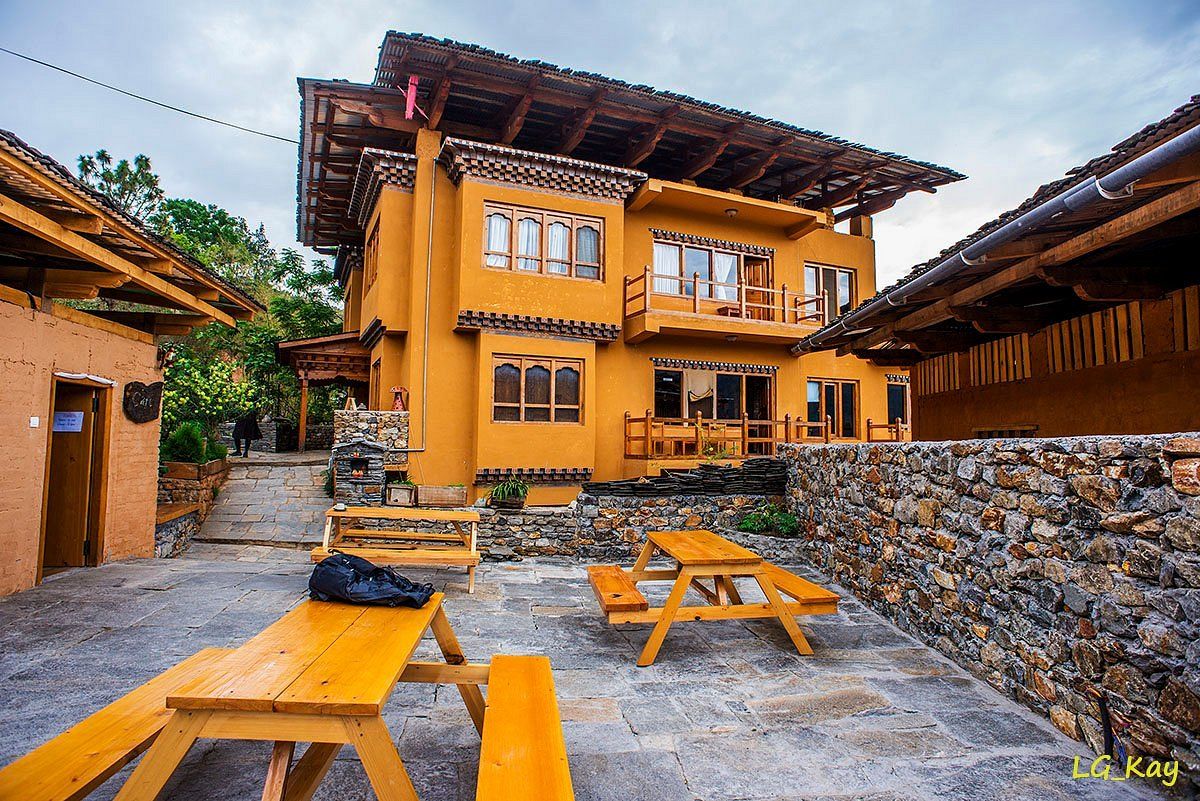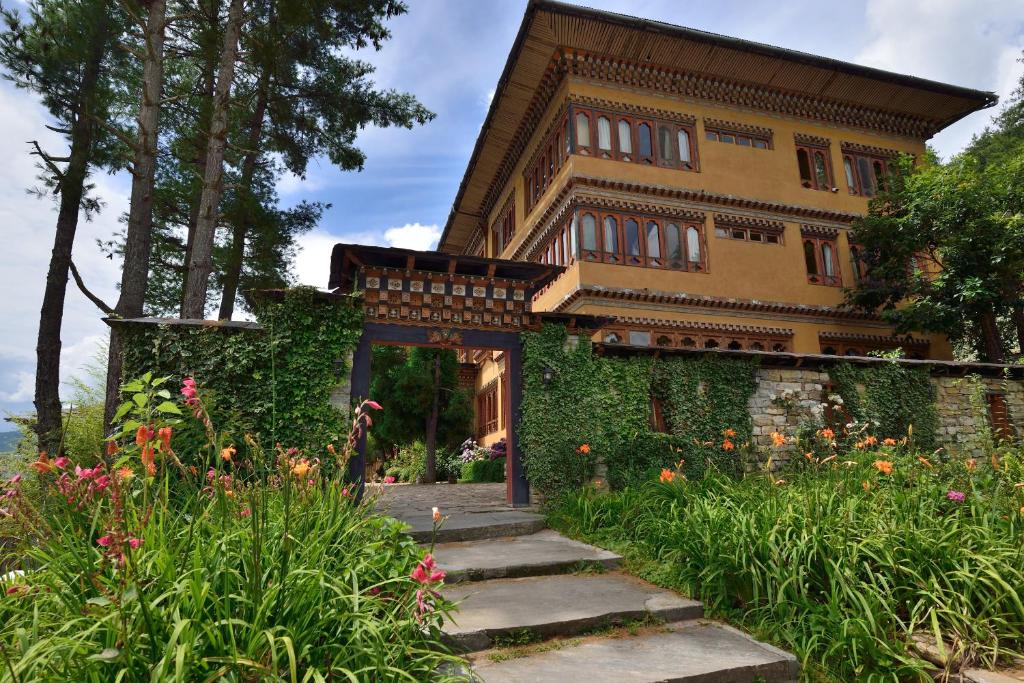Essential Insights: 18 Must-Know Tips for Planning Your Bhutan Journey:
Embraced by the Himalayas, the Kingdom of Bhutan emerges as a breathtaking destination, often overlooked due to its remote location, expenses, or travel complexities.
As the sole Vajrayana Buddhist nation globally, Bhutan boasts a tapestry of rich culture, profound heritage, a serene society, and diverse natural landscapes stretching from the northern Himalayan peaks to the lush southern jungles.
While the allure of Bhutan is undeniably beautiful and paradisiacal—in my perspective—planning a journey to “The Last Shangri-La” requires thoughtful consideration, given its distinctive nature as a non-traditional holiday destination.

Discovering Bhutan: A Journey to the World’s Sole Carbon-Negative Nation
Bhutan stands out as an exceptional destination, being the exclusive carbon-negative country globally, absorbing more carbon dioxide than it emits. This not only positions it as a beacon of environmental friendliness but also makes it a uniquely appealing place to visit.
Touring Bhutan as a visitor unfolds as a truly remarkable experience. The locals extend warm hospitality, providing ample opportunities to relish breathtaking vistas and delve into captivating cultural attractions.
Throughout the country, Buddhist temples grace the landscape, inviting exploration with their exquisite architecture and serene ambiance. Bhutan, with its commitment to sustainability and the serene beauty of its landscapes, offers a distinctive and enriching travel experience.
Navigating Bhutan: A Comprehensive Guide to 19 Vital Insights
Renowned for prioritizing Gross National Happiness over traditional economic metrics like Gross Domestic Product, Bhutan captivates with its unique philosophy. The Bhutanese people embody this emphasis on well-being and contentment. Yet, as you embark on your journey to Bhutan, there are crucial considerations to bear in mind.

Essential Bhutan Travel Information: Visa Requirements and Application Process
1. Visa Prerequisites:
– Except for citizens of India, Bangladesh, and the Maldives, all other nationalities need a visa to enter Bhutan.
– Indian, Bangladeshi, and Maldivian nationals can present a valid passport (or Voters Identity Card for Indian citizens) upon arrival at the border or airport.
2. Visa Application Process:
– Tourists from other countries must obtain a visa clearance either through their tour company or by applying independently before traveling to Bhutan.
– The visa fee is $40, and there’s an additional daily Sustainable Development Fee per person (covered in detail in point #3).
– Independent travelers can apply on the official website, while those on a tour must submit their passport’s photo page to their tour operator for visa processing.
3. Application Details:
– It is advisable to review the visa FAQs on the official website for comprehensive information.
– Upon approval, you’ll receive a visa clearance letter via email from your tour company or through online channels.
– At the point of entry, present the visa clearance letter for immigration, where the official visa will be stamped in your passport.
2.Independent Travel to Bhutan: A New Era of Exploration
2. Freedom to Travel Solo:
– In a significant shift from the pre-2022 era, all nationalities, including non-Indians, Bangladeshis, and Maldivians, can now explore Bhutan independently and directly engage with service providers.
3. The Evolution of Bhutan Travel:
– Historically, traveling independently in Bhutan was not feasible, except for specific nationalities. However, recent changes allow travelers of all backgrounds to experience the country without mandatory tour company involvement.
– Despite the newfound freedom, the advantages of guided tours, especially in a country rich in history and mysticism like Bhutan, are noteworthy. Pre-pandemic, touring with companies like Yangphel Adventure Travel offered deeper insights into the country’s culture and heritage.

4. Exceptional Tour Operators:
– Yangphel Adventure Travel, a seasoned tour company since Bhutan’s tourism inception in the late 1970s, is highly recommended. Their expertise and reputation contribute to a memorable Bhutanese experience.
– Choosing a tour company, such as Druk Asia, can provide a hassle-free journey, with comprehensive tour options and expert consultations for planning an ideal Bhutan trip.
Embrace the newfound flexibility or opt for the guidance of experienced tour operators to tailor your Bhutan adventure to your preferences.
Bhutan’s Daily Fee Update: Navigating the Revised Cost Structure

3. Revised Daily Fee Structure:
– Prior to 2022, the Bhutanese visa encompassed a $250 daily fee, covering tour expenses, accommodation, food, and transportation. Of this, $65 contributed to the Sustainable Development Fee (SDF).
4. Controversial Restructuring:
– Bhutan has recently overhauled its visa cost, separating the mandatory tours and associated expenses from the visa fee. The SDF, however, has surged to $200 per day per person.
5. Empowerment of Travel Choices:
– The restructuring grants travelers more autonomy in tailoring their experiences and managing expenses. Whether opting for budget or luxury travel, individuals can now directly engage with service providers and choose accommodations.
6. Financial Considerations:
– Despite the newfound flexibility, the increased SDF may elevate the overall trip cost. This fee, however, contributes to initiatives promoting carbon-neutral tourism and sustainable sector development.
7. SDF Allocation:
– The escalated SDF aims to support activities such as offsetting tourists’ carbon footprints and enhancing skills within the tourism sector. The Tourism Council of Bhutan highlights that fees for Indian tourists will undergo future revisions.
Navigating the revised fee structure provides travelers with greater control over their journey while contributing to Bhutan’s commitment to fostering sustainable and environmentally conscious tourism.
Navigating Affordable Stays and Insurance in Bhutan
Securing Budget-Friendly Accommodation:
During the era of mandatory tours with a $250 daily visa fee, Yangphel Adventure Travel provided me with the opportunity to experience the exquisite Zhiwa Ling Hotel, the sole five-star Bhutanese-owned hotel recognized as a National Geographic Lodge. The splendor of this accommodation is truly worth the experience.
While Bhutan may not be the most budget-friendly destination, the enriching experience it offers justifies the expenses. With the newfound flexibility to book hotels independently, here’s a curated list of accommodations in popular destinations:
– Paro
– Thimphu
– Phuntsholing
– Punakha

Travel Insurance Essentials:
In Bhutan, travel insurance is mandatory. Whether you’re an independent traveler or your tour company doesn’t provide coverage, HeyMondo offers a comprehensive travel insurance solution that includes coverage in Bhutan. Ensure a worry-free journey by securing the necessary insurance for your Bhutanese exploration.
Exploring Entry Options into Bhutan: Flight or Overland?
1. Diverse Entry Paths:
– While flying remains the predominant means to reach Bhutan, it’s essential to note that the country hosts only one international airport in Paro, situated an hour away from Thimphu, the capital. Overland entry is feasible from India but not from Tibet/China.
2. Air Travel Details:
– Only three airlines operate flights to Bhutan: Druk Air, Bhutan Airlines, and Buddha Air (for charter flights).
– Departures to Bhutan exclusively originate from Nepal, India, Bangladesh, and Thailand. Malaysia and Indonesia serve as seasonal departure points.
3. Finding Flights:
– If your tour excludes flights, consider exploring options on Skyscanner or WayAway.
– A money-saving tip is to purchase separate roundtrip tickets: one from your home country to a departure hub (Nepal, India, Bangladesh, or Thailand) and another from that hub to Bhutan.
– WayAway offers a WayAway Plus membership, extending beyond affordable flights to provide cashback on bookings for various travel needs, along with premium support for comprehensive trip inquiries.
– Use my promo code to get a 10% discount.
4. A Note About Bhutan’s International Airport:

– Paro Airport, Bhutan’s sole international airport, offers one of the most interesting and challenging landings due to its mountainous location.
5. Camping and Homestays:
– Homestays in Bhutan involve farmhouse stays operating similarly to hotels with Western standards. Camping is an option during trekking, resembling regular camping with added comforts.
– Visa fees, including the Sustainable Development Fee (SDF), apply even during camping or glamping experiences.
6. Freedom to Explore Anywhere:
– With the relaxation of zone travel permits, travelers now enjoy the freedom to move around Bhutan without extensive planning.
– Access to the east side of the country, previously limited by logistics, is improving with the opening of new airports.
7. Spicy Bhutanese Cuisine:
– Bhutanese cuisine leans heavily towards spiciness, with chili being a staple in almost every meal. Non-spicy options can be requested, ensuring a more comfortable dining experience.
– Ema Datse, the national dish, is a spicy curry of chilies and farmer’s cheese, reflecting the country’s love for bold flavors.
8. Phallic Symbols in Culture:
– Bhutanese culture embraces phallic symbols, stemming from the teachings of Drukpa Kunley, a revered saint who propagated Buddhism through unconventional methods.
– The phallic worship is part of Bhutan’s unique history, with symbolism integrated into various aspects of daily life, including temples like Chime Lhakhang, associated with fertility rituals.
Embark on your Bhutanese adventure with these insightful tips to enhance your travel experience.

Exploring Entry Options into Bhutan: Flight or Overland?
1. Diverse Entry Paths:
– While flying remains the predominant means to reach Bhutan, it’s essential to note that the country hosts only one international airport in Paro, situated an hour away from Thimphu, the capital. Overland entry is feasible from India but not from Tibet/China.
2. Air Travel Details:
– Only three airlines operate flights to Bhutan: Druk Air, Bhutan Airlines, and Buddha Air (for charter flights).
– Departures to Bhutan exclusively originate from Nepal, India, Bangladesh, and Thailand. Malaysia and Indonesia serve as seasonal departure points.
3. Finding Flights:
– If your tour excludes flights, consider exploring options on Skyscanner or WayAway.
– A money-saving tip is to purchase separate roundtrip tickets: one from your home country to a departure hub (Nepal, India, Bangladesh, or Thailand) and another from that hub to Bhutan.
– WayAway offers a WayAway Plus membership, extending beyond affordable flights to provide cashback on bookings for various travel needs, along with premium support for comprehensive trip inquiries.
– Use my promo code to get a 10% discount.

4. A Note About Bhutan’s International Airport:
– Paro Airport, Bhutan’s sole international airport, offers one of the most interesting and challenging landings due to its mountainous location.
5. Camping and Homestays:
– Homestays in Bhutan involve farmhouse stays operating similarly to hotels with Western standards. Camping is an option during trekking, resembling regular camping with added comforts.
– Visa fees, including the Sustainable Development Fee (SDF), apply even during camping or glamping experiences.
6. Freedom to Explore Anywhere:
– With the relaxation of zone travel permits, travelers now enjoy the freedom to move around Bhutan without extensive planning.
– Access to the east side of the country, previously limited by logistics, is improving with the opening of new airports.
7. Spicy Bhutanese Cuisine:
– Bhutanese cuisine leans heavily towards spiciness, with chili being a staple in almost every meal. Non-spicy options can be requested, ensuring a more comfortable dining experience.
– Ema Datse, the national dish, is a spicy curry of chilies and farmer’s cheese, reflecting the country’s love for bold flavors.
8. Phallic Symbols in Culture:
– Bhutanese culture embraces phallic symbols, stemming from the teachings of Drukpa Kunley, a revered saint who propagated Buddhism through unconventional methods.
– The phallic worship is part of Bhutan’s unique history, with symbolism integrated into various aspects of daily life, including temples like Chime Lhakhang, associated with fertility rituals.
Embark on your Bhutanese adventure with these insightful tips to enhance your travel experience.
9. Currency Tips and Cultural Nuances:
Bringing US Dollars and Handling Currency:
– While the local currency, Ngultrum (Nu), is accepted, having US dollars is convenient for souvenirs, tips, and other expenses. ATMs at the airport provide easy access to cash, as the number of ATMs in the country is limited.
– Paying in Nu or USD is common, and receiving Indian Rupees in return is normal. The Nu is paired one to one with the Indian Rupee and is widely accepted.
10. Embracing Astrology in Bhutan:
– Astrology plays a significant role in Bhutanese culture, influencing decisions ranging from house construction to childbirth and cremation. Even if you don’t personally adhere to astrology, respecting its importance is crucial during your visit.
11. Mountaineering Prohibitions:
– Hiking is permissible up to an elevation of 6,000 meters, with peaks below this altitude considered trekking peaks. Mountaineering, however, is forbidden, as higher elevations are sacred to the Bhutanese.
– The belief is that disturbing the gods and goddesses residing in the snow peaks can lead to natural disasters such as hailstorms, droughts, and floods.
12. Seasonal Considerations:
– Plan your trip with consideration for the seasons. Spring and fall are often ideal for hiking with clear skies and moderate temperatures.
– Summer, marked by heavy rains and cloud cover, may obscure views. Winter offers clear views of the snow-capped Himalayas but may limit access to mountainous regions due to road closures.
– Visiting during the monsoon season in summer brings the risk of rain and limited visibility, but careful planning can help mitigate these challenges.
















